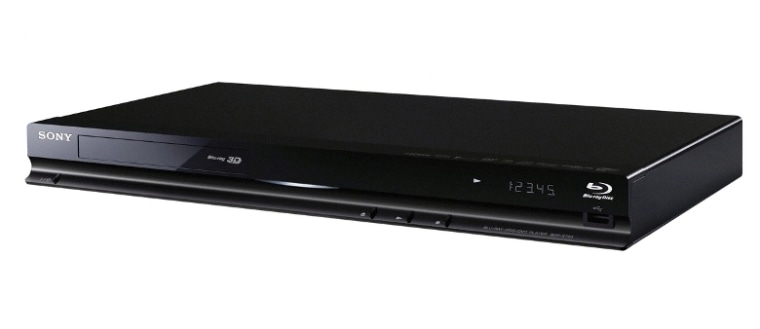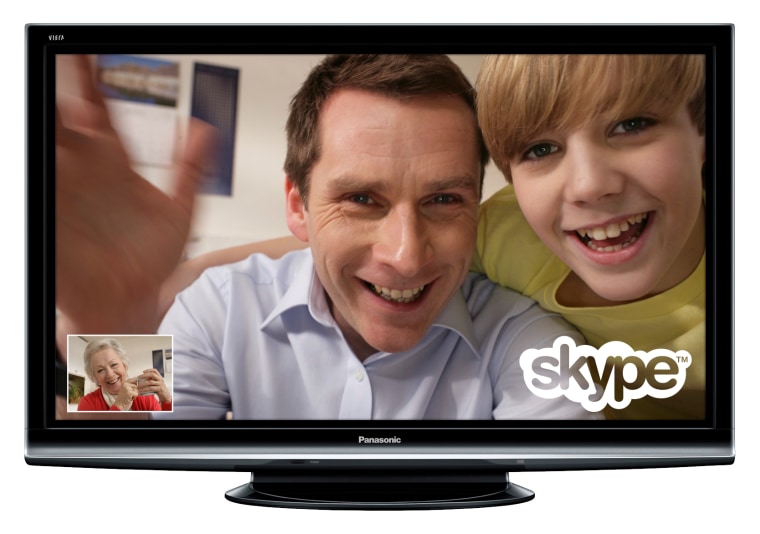I have family spread across the country and as far away as Senegal, and have used Skype’s free video chat to stay in touch for years. The process was always the same — my husband and I would pull two chairs in front of a computer and a child would clamber onto each lap.
When my third child was born in 2008, there just wasn’t room for all of us in front of the webcam anymore. We’d outgrown it, but there were no alternatives.
Finally, in 2010, we were back in business, but with a different routine. Some of the newest TVs that connect to the Internet could now support the Skype video chat app, and the five of us would find a comfortable spot on the sofa in front of the gorgeous 54-inch Panasonic Viera VT25 I was testing. Its wide-angle webcam easily captured the five of us in all of our HD glory.
Apps come preloaded on the TV and are provided by the manufacturer through their Internet app service. For instance, Panasonic has Viera Cast, Sony has Bravia Internet Widgets. Companies will add and update apps from time to time.
Here’s how it works. I launch the Skype app on my TV and input my user name and password using the remote. My Skype address book is stored online, so I simply select my parents’ names and their laptop running Skype starts ringing.
Skype video chat works between any two devices that are using the Skype video chat app. Today that means TVs with Internet connections, the iPhone, iPod Touch, PCs and Macs.
The quality of the video is dependent on the speed of both of our Internet connections. I have a Verizon service, FiOS, which sends and receives data at high speed. My parents have DSL, which is fast going into their home, but slow going out. So we see them in standard definition and they see us in HD. Even my calls from my iPod Touch look great because I’m using our home’s Wi-Fi network, which hooks up to FiOS.
I can receive calls whenever the TV is on, but I try to schedule my calls so I can make sure my family and our living room are ready for visitors.
More from Techlicious:
- Skype Video Chat Comes to iPhone
- Skype Comes to Blu-ray Players
- Skype Launches Version 5.0 with Facebook Integration
So what will I do when I give the TV back to Panasonic? Today, there are plenty of options.

There’s Cisco’s Umi, which hands down delivers the best picture quality at full HD 1080p. Umi is a two-piece system, a box that plugs into your TV and runs the Umi app and an HD webcam with motorized pan, tilt and zoom. But at $600 for the hardware and $25 per month for the service, it's way too rich for my blood. Plus it only works with other Umi devices or computers running the Google video chat app.
There’s the Google TV Logitech Revue box ($300) and its webcam ($150), but it has its own video chat app called Logitech Vid HD that doesn’t connect with Skype. Then there’s the Xbox 360 Kinect, which I own and works really well for video chat. But it uses Windows Live Messenger, which again limits your address book to those with computers running Windows Live Messenger.
But I’m choosing none of the above. I’ll wait until this spring to get one of the new Blu-ray players from Panasonic or Sony that has the Skype video chat app and a wide-angle webcam. They’ll cost as little as $250, possibly less, plus the cost of the webcam. And I can hook it up to my “real” TV, which is almost nine years old.
A tech expert with a nine-year-old TV? Yes, I know. Embarrassing. But hey — it still works!
You can chat with Suzanne — without video — on Twitter @techlicious and subscribe to her daily Techlicious Newsletter.
